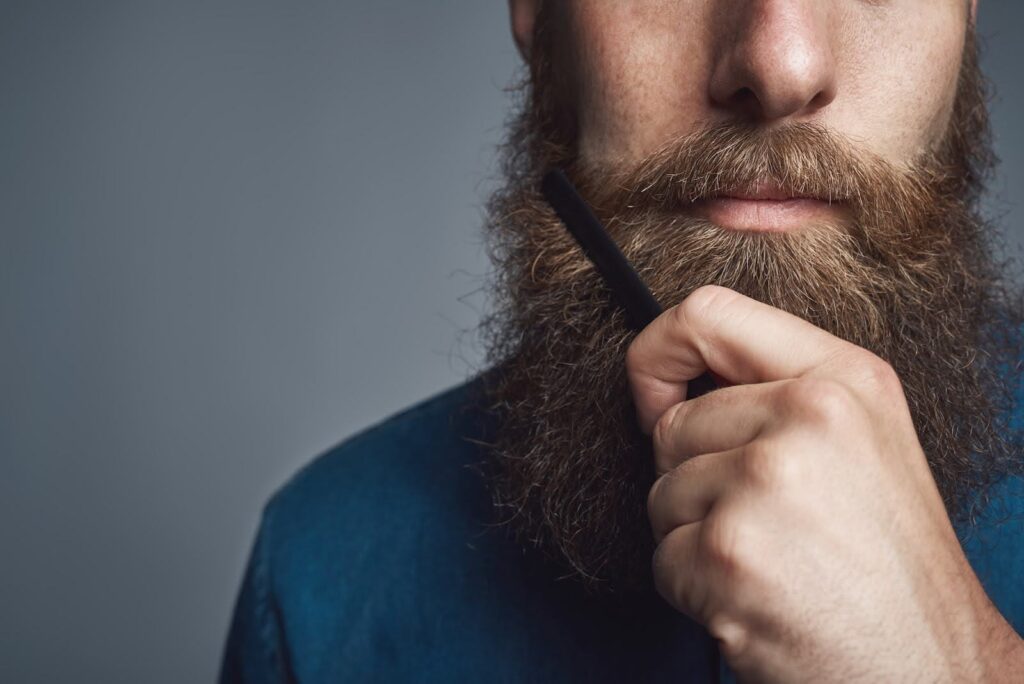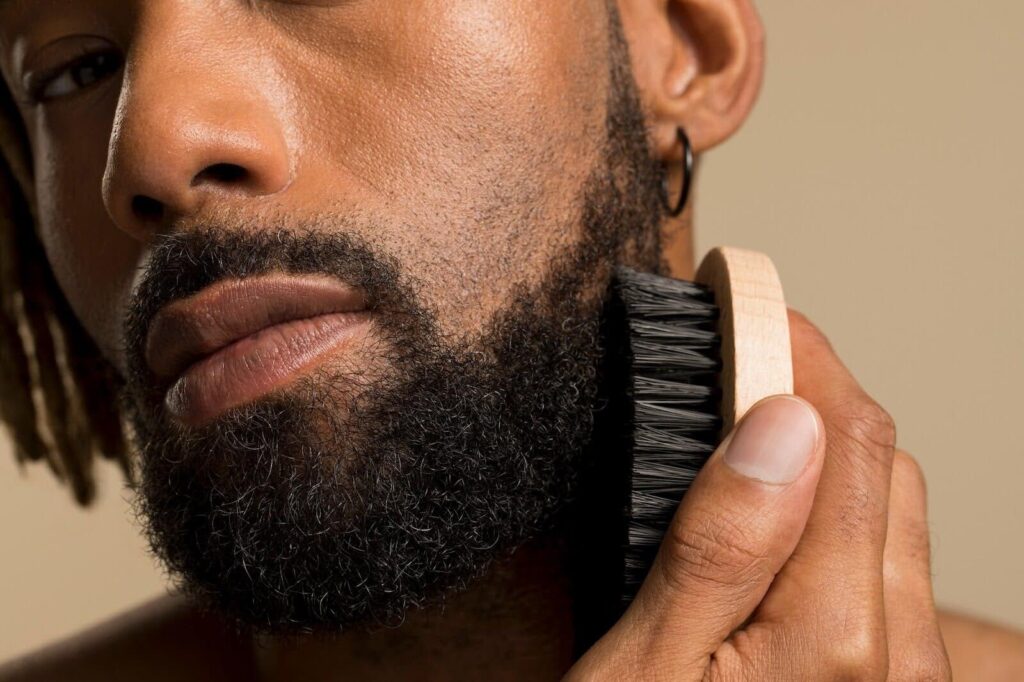If you find yourself cursing the current trend of facial hairstyles because your own facial hair is patchy at best, you’re not alone.
However, you might at least thank the stars you are living in the right decade for someone who has this problem. Over the last few years, beard transplants have become a viable solution for hair loss or other issues of facial hair growth.
The innovations in the medical and aesthetics fields over the last two decades have changed the outlook for men suffering from male pattern baldness as well as women with thinning hair. But only more recently have hair clinics and plastic surgeons found a way to apply this knowledge to beard transplants.
Why Is My Beard Patchy?
Hormones
Contrary to many hair loss myths you might have read about, thin facial hair is not likely the result of something you did wrong. Instead, the most likely culprit is hormones. Specifically, a hormone derived from testosterone called dihydrotestosterone or DHT. If you suffer from male pattern baldness, it means that your hair follicles are hypersensitive to DHT, more so than people not suffering from genetic hair loss.
A surplus of DHT affects hair follicles negatively and eventually stops them from producing hair growth. Most often this affects the hair in the temples and the crown, which is what gives male pattern baldness its distinctive pattern. But it can also affect the growth of facial hair, resulting in a patchy beard.
Genetics
What causes DHT levels to be higher in some men than in others?
Many studies have been conducted, and while we still haven’t exactly found a cure for hair loss, we have a better idea of where to look. Geneticists have been able to pinpoint specific genes responsible for hair loss. These genes – some passed on via the X-chromosome, giving some credence to the idea that the maternal grandfather might be to blame for your hair loss, but others passed on from both parents – look different in men suffering from male pattern baldness than in those who don’t.
Read more about the genetics of balding here.
Alopecia
While genetics and hormone levels point to problems with permanent hair loss, your patchy beard might be caused by a condition like alopecia areata, which can be temporary in nature. This is an auto-immune disease that can cause hair loss on the scalp, face, and other parts of the body. It affects men and women equally, and about 7 million Americans suffer from it.
If your beard is uneven and patchy and you experience baldness in other areas as well, it might be a sign for alopecia. The good news is that there are options for treating alopecia. And even when your disease is “active, your hair follicles are still alive, meaning your hair can grow back again.
Learn more about alopecia areata here.
How Can a Beard Transplant Restore My Beard?
A beard transplant works much like a hair transplant. Healthy, hair-producing follicles are inconspicuously removed from a donor area – typically from the back of the head for hair and beard transplants alike – and inserted or grafted onto the beard.
This is achieved with a procedure called Follicular Unit Extraction (FUE). Each graft of 1-4 follicles is extracted individually and then transplanted to its new home. This results in a series of small punctures all over the scalp and face, which over the course of about 7 days scab over and heal.
Beard transplants typically require fewer grafts than hair transplants. Often times, 2,500 grafts are enough to fill in all the patches.
There is another difference to hair transplants: Beard transplants require a different angle of insertion for the grafts, so as to naturally mimic the growth pattern of facial hair. This is why it’s important that you choose a provider with experience in beard transplants. A hair clinic that only performs regular hair transplants may not have the necessary expertise to create a natural-looking beard.
A Few Facts About Beard Transplants
- The aforementioned FUE method is the preferred method for beard transplants. There is another method called FUT that is similar but harvests the donor hair by removing an entire strip of hair from the back of the head. This results in a linear scar that may make a longer hairstyle necessary, whereas there is no such scar with FUE.
- Beard transplants are virtually pain-free. They are not particularly fast – painstakingly moving individual follicles suggest as much – but other than spending the better part of a day in a chair watching TV, they are easy to endure.
- Beard transplants, similar to hair transplants, don’t require a long recovery time. You will experience some swelling that could last a few days, and you will have to account for the scabbing over of the small punctures on your scalp we mentioned above. You will also have to be careful with sun exposure for a while. But you won’t have much downtime in terms of your regular activities as long as you adhere to the recovery guidelines about sleeping and washing.
- Before your new hair can begin to grow, it will actually fall out starting about 3 weeks after your procedure. This is completely normal but sometimes causes alarm if not properly communicated. Your new hair follicles act like any follicle would, meaning they produce hair in phases. The shedding phase causes the hair to fall out, but it will begin to grow again after the dormant phase. Your doctor will give you a recovery timeframe so that you know what to expect after the procedure.
- Beard transplants aren’t cheap. They can range from $5,000 to $9,000, or even higher in high-cost metropolitan areas. However, it’s important to consider that this is a permanent solution, not a temporary regimen of successive treatments. Make sure you ask for provider for interest-free medical financing plans to help spread out your cost.
Are you ready to move one step closer to doing something about your patchy beard? It’s easy and it doesn’t cost you anything: Simply upload your pictures straight from your phone, answer a few questions about your current beard growth, and receive a FREE beard transplant quote by the next business day.

